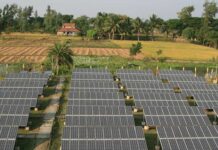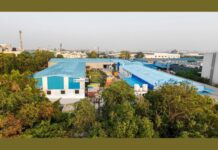Under the Aatmanirbhar Bharat vision, bolstering our manufacturing strength is part of our national strategy for the current and the coming decades. Under the Jawaharlal Nehru National Solar Mission (JNNSM), we strive to promote solar in India and establish our nation as a global leader in the solar energy industry.
Historically, we have had a heavy reliance on Chinese imports. But the post-pandemic world brought travel restrictions and supply disruptions, leading to countries looking elsewhere for more reliable options. We need to get back to the basics and focus on manufacturing. Self-reliance is the ultimate virtue in the context of ever-changing macroeconomics.
A relatively weak infrastructure coupled with a lack of funding has put experts in limbo about whether our targets are realistic. Our goal is to sufficiently supply solar modules in the domestic and international markets and ultimately be energy independent.
So what is the current state-wise division of our manufacturing output? Gujarat accounts for 50% of the country’s solar module production capacity; whereas Telangana accounts for 39% of the total production capacity of solar cells. Our current solar module and solar cell manufacturing capacity is around 65 GW and 6 GW respectively.
A multi-pronged policy mix has been adopted by the government to promote solar adoption. In the Budget 2024-25, a corpus of 10000 crores was allocated to promote the solar industry, a 110% increase from the previous year.
Solar manufacturing equipment has been exempt from the BCD (basic customs duty) list to boost domestic manufacturing. In contrast, there is a 10% customs duty on the import of solar glass as we currently have enough capacity to meet all our domestic requirements.
If one were to do a cost analysis of the different stages of production of a PV panel, we would find that the earlier stages of the PV manufacturing chain, like the making of polysilicon and ingots, were costlier than the latter stages. We need to hone our expertise in these types of highly specialised processes.
MNRE (Ministry of New and Renewable Energy) has introduced the DCR policy to promote the Make in India initiative- solar panels that meet the government’s requirement to promote local manufacturing are classified as DCR (domestic content requirement) panels.
Currently, DCR panels are significantly more expensive than their non-DCR counterparts; the difference is about 10 Rs per watt. Decreasing the cost of DCR modules is not only inherently a flagbearer of a self-reliant India but also will simultaneously pull down the cost of the solar system significantly, making adopting solar much more affordable.
Apart from these, there are ALMM and PLI policies in place to protect domestic manufacturers. ALMM (approved list of models and manufacturers) is a list of solar cells, module types and manufacturers that have been certified by BIS (Bureau of Indian Standards) and have been approved by the MNRE. And a PLI (production-linked incentive) scheme of Rs 19500 crores to incentivize the manufacturing of solar cells has been structured.
Solar module exports in FY 23-24 were approximately 2 billion dollars and have grown by 90% year-on-year. On the other hand, imports are a mammoth 4 billion dollars. Despite the current module export surplus, the decreasing gap has been positively impacting our GDP. The initiatives and incentives deployed by the government coupled with the fervour in the private sector have led to this.
India and the whole world is making a billion-dollar bet on solar as we move towards building a sustainable world. Predicting the exact energy mix of the future is a tough task, but solar will undeniably be the cornerstone of it.
About the Author

The Author is the Vice President – Solar Design and Engineering (VP – Solar Design and Engineering) of Oorjan Cleantech (https://www.oorjan.com). Oorjan is one of India’s fastest-growing solar companies, co-founded by IITians and ex-bankers.





![SMART ENERGY WEEK [September] 2025 to Lead Global Renewable Energy Advancements SMART ENERGY WEEK](https://timestech.in/wp-content/uploads/2025/07/Untitled-design-2025-07-31T112230.406-218x150.jpg)










